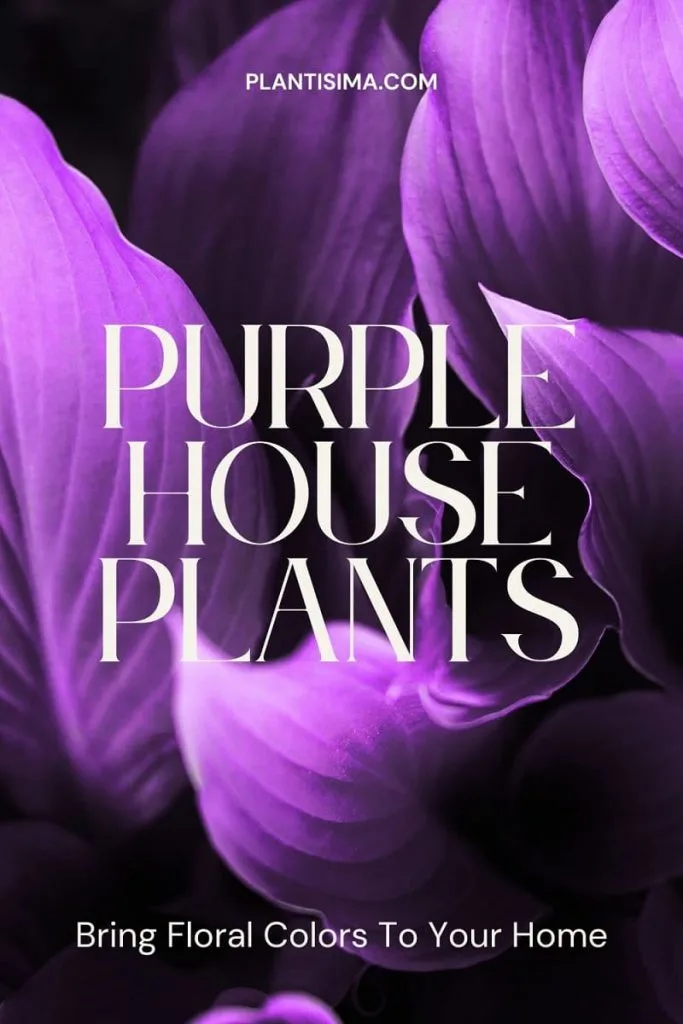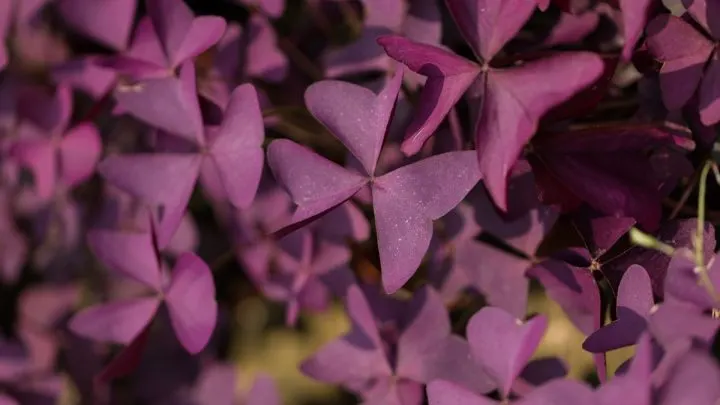It is that time of the year when you want to bring colors into your home and enrich the space around you. You’re choosing purple and green leaves this time. Purple house plants are a good pick for you!
Your indoor plant collection never looked better! You have hanging baskets, and with a bit of work and reading you’ve done, you have a complete collection of vibrant foliage around you, and let’s face it, that purple color did its job nicely.
However, before you do anything, maybe it’s best if you read more about purple house plants, just to be clear on their varieties.
When you’re done, your home will be a host of lovely purple plants with white flowers, bright red flowers, and good-looking lance-shaped leaves-every house plant collector’s dream!
More About Purple Indoor Plants
There are over 40 purple indoor plants. To choose the best one for you, we’re bringing 11 different varieties (the most popular ones) for you! Without further thought, let’s start.
Purple Passion (Rubber tree) Growing Tips
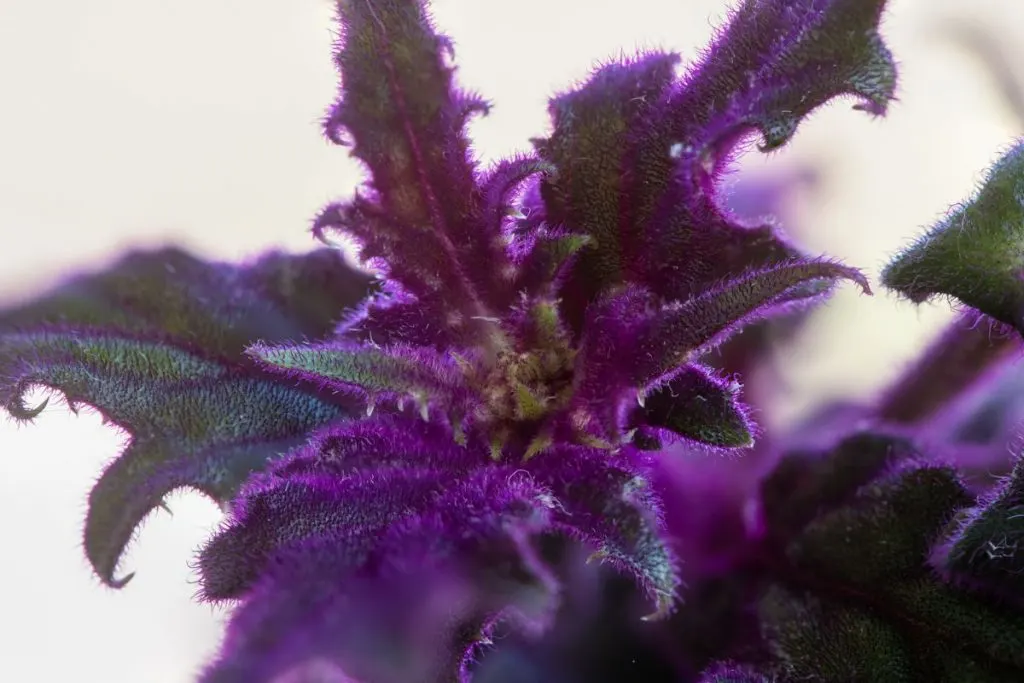
Purple Passion botanical name: Gynura aurantiaca
Native habitat: Southeast Asia
Humidity: likes moist air
Height: two feet tall
Temperature: 75-85 F
Soil: neutral soil
Watering: Once a week
Sunlight: partial sun
Purple passion houseplants love a great location.
– What kind of soil does a plant of purple passion need? Plant a plant of purple passion in soil that has medium humidity.
It tolerates dry soil relatively well, so you don’t have to worry if you forget to water it here and there. We suggest watering the soil, not the leaves, to avoid water stains on the leaves.
– How much sunlight does this plant need? The ideal growing temperature for the plant of purple passion is between seventy-five and eighty-five degrees Fahrenheit.
Growth slows when temperatures drop below sixty degrees; however, when the temperature remains above eighty-five, the changes will increase, and the plants will become long-legged.
– The best time to prune rubber trees is late winter or early spring. Cutting the vascular plant by a few thirds can encourage strong growth and extra fruit. Maintain the dimensions you need for your purple passion plant by pruning the vines when they become too long.
Cut these vines so that they are three feet or shorter. Offer generous watering to the purple passion fruit plant as soon as you finish pruning it, saturating the soil evenly.
Save Your Oohs For Prayer Plant
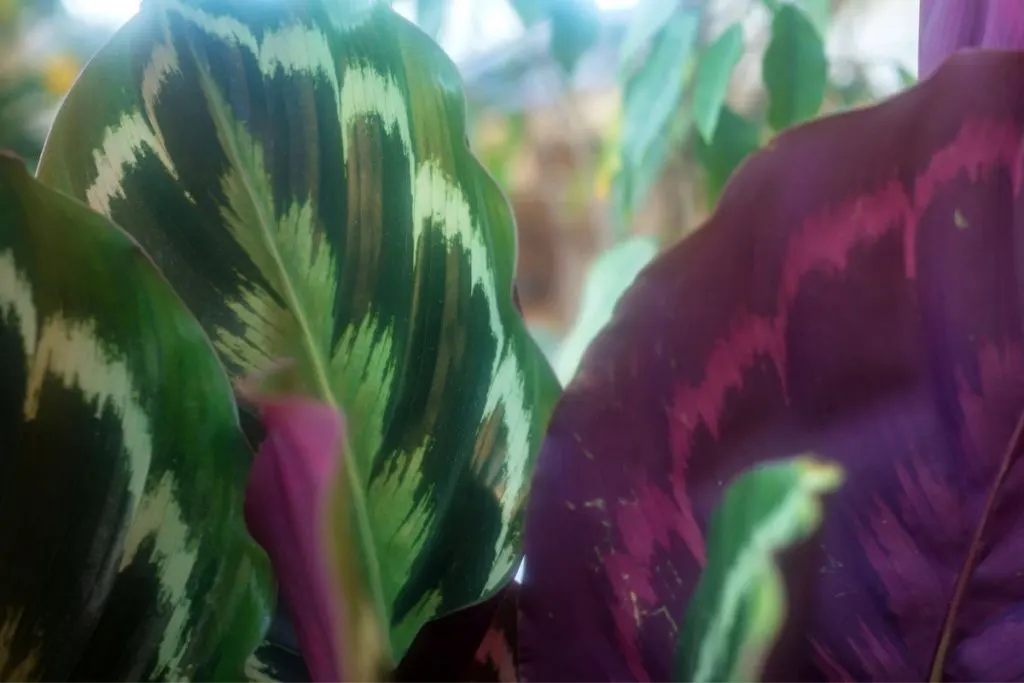
Prayer plant botanical name: Maranta leuconeura
Native habitat: Brazilian tropical forests
Humidity: around 60 percent
Height: 10 to 12 inches tall
Temperature: between 65 and 70°F
Soil: one part loamy soil, and one part perlite or coarse sand together
Watering: when the top 25% of the soil is dry
Sunlight: Partial shade
Looking at its photo, we can just think about one thing: who wouldn’t want it in their house plant collection? Wonderful purple and green veins, purple stems, and purple underside, I know I want one!
– The best place for your prayer plant is in a bright, warm place. It is ideal anywhere in a room or office that is well lit, draft-free, and not next to a radiator. The most important piece of advice is to keep prayer-plants away from direct sunlight. Because of that this plant is a good fit as a plant for an office with no windows.
– Prayer plants need well-drained soil containing peat moss and a little sand to create loamy soil. Adding coarse sand or perlite to the potting mixture helps to drain excess water. Prayer plants also grow well in slightly acidic soil pH 5.5 – 6.0.
– When it comes to proper nutrition, balance is crucial. Insufficient feeding can result in poor growth and a generally unhealthy appearance. Prune your prayer plant by cutting a pair of sterilized garden shears just above the leaf nodes. Pruning two or three times a year (the best time is in the fall and spring) helps encourage bushy growth. Pruning a prayer plant also helps remove socks or dead leaves.
– You can propagate the prayer plant by placing the cuttings of the stem in a glass of water. Wait until the roots are 1-1,5 inches long before transferring them to a pot. A mixture of soil, peat, and perlite or coarse sand helps to create the perfect soil type for growing a prayer plant.
Save Your Aahs For Persian Shield Plant
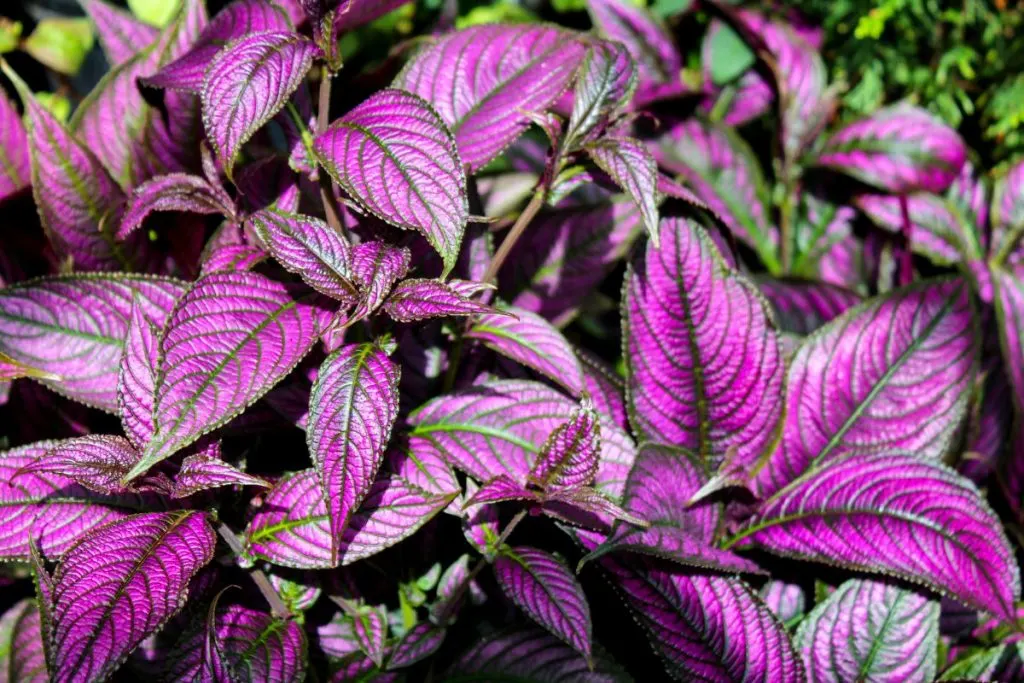
Persian Shield Plant botanical name: Strobilanthes auriculata var. dyeriana
Native habitat: Tropical places
Humidity: 40% humidity
Height: up to 5 feet tall
Temperature: above 60 degrees Fahrenheit
Soil: one part houseplant soil, and one part perlite
Watering: water them twice a week
Sunlight: shade
– Although more tolerant of low temperatures than many tropical ones – they can overwinter outdoors in mild zones – you will need to bring in houseplants indoors before the frost starts. If you give them enough light and moisture indoors, they will give your home a continuous display of colors.
– Its common name refers to broad shield-shaped metallic sheets. The leaves grow from 4-8 inches and are slightly serrated with green veins and purple and silver tones on the upper surface. Strobilanthes love a lot of moisture in both the air and the soil.
– The rich organic soil provides a nutritious base for Persian shields outdoors or in pots, so don’t skip that. Fertilizing will not make up for bad soil: they respond best to a light regime.
– A pot filled with Strobilanthes is a beautiful sight, but the plant does not cooperate without the help of pruning. It’s easy to do – the only trick is timing. Pruning is best done while the plant is active — well, it can be done at any time, but the stem can die if cut off during its dormancy.
– Pruning is done easily as well: Take the top of the stem 6-7 inches long. Wash the part carefully to remove pests. Remove the lower sheets. Place in conditioned room temperature water. Change the water every 24-48 hours. Once the cutting has a small set of roots, place it in a light soil mixture. Their roots grow better in the soil.
What To Know About Purple Shamrock (Oxalis Triangularis)
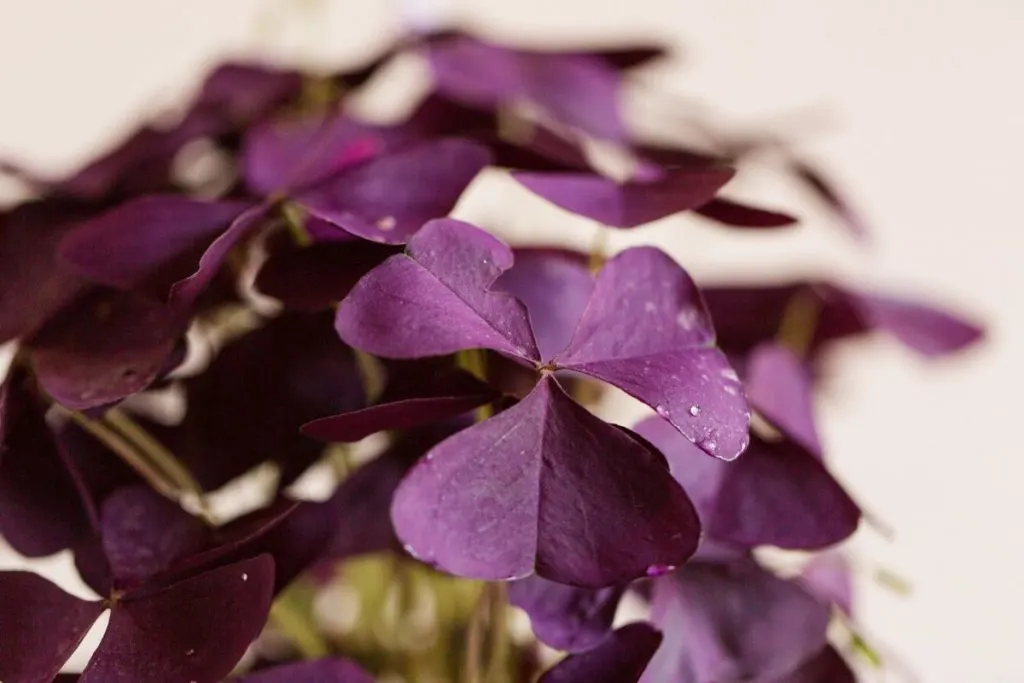
Purple oxalis botanical name: Oxalis triangularis
Native habitat: South America
Humidity: around 50%
Height: 0.5–1 ft. tall
Temperature: between 60 and 75 degrees Fahrenheit
Soil: good drainage
Watering: 2 to 3 times per week
Sunlight: a bit of sun
– To keep your purple shamrock plant healthy, grow it in a rich, well-drained potting mix and water it when the top inch of soil dries. Maintain moderate humidity, fertilize every two to three weeks, put in bright light, and maintain an internal temperature between 60 and 70 F.
– Oxalis triangularis has good results when grown in standard pots that drain well. Bulbs or fibrous roots will rot if planted on too heavy soil that retains too much water.
– For best growth, place your purple clover in an enclosed place that receives strong light. If the light conditions indoors are too low, the plant’s growth will not be so strong and it will tend to become long-legged.
Apart from removing dead leaves, especially when the plant is dormant, the requirements for pruning purple clover are low or non-existent.
Oxalis triangularis is propagated by separating the shifts to create additional plants. This is best done while the clover is dormant. Remove the purple clover from the container and gently separate the bulbs. Once separated, you can plant the bulbs in new pots.
Before you consider transplanting or separating shifts, make sure you allow the leaves to die naturally and don’t cut them off too soon while it still has color.
Don’t Forget The Polka Dot Plant
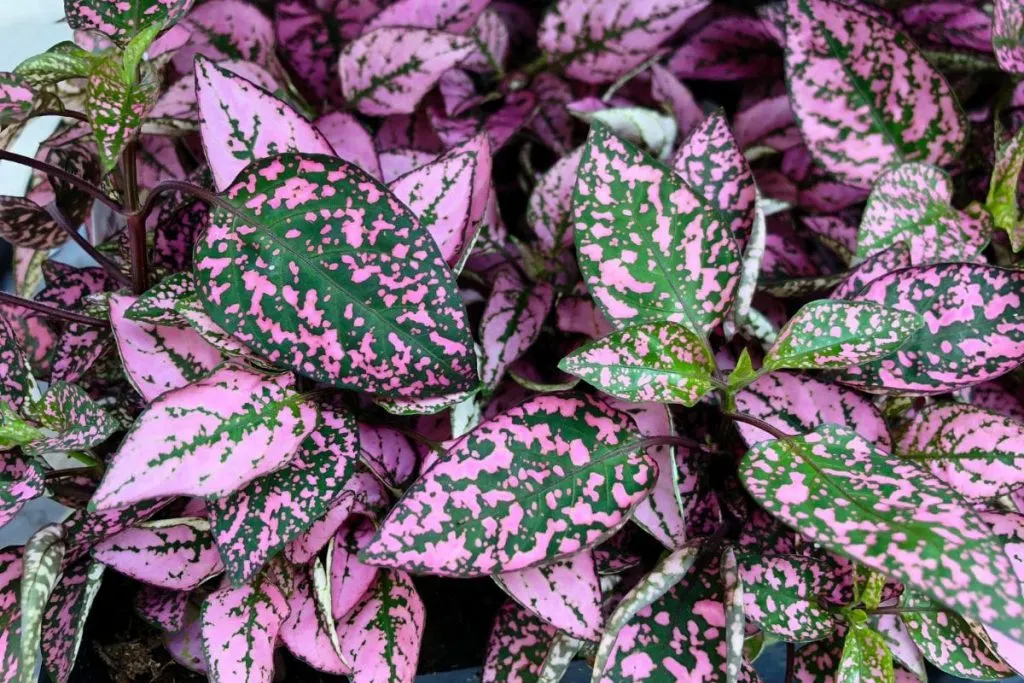
Polka dot plant botanical name: Hypoestes phyllostachya
Native habitat: humid tropical forest areas
Humidity: high to medium humidity
Height: up to 30 inches
Temperature: 70° to 75°F
Soil: organically rich soil with good drainage
Watering: enough to keep the soil consistently moist
Sunlight: Bright light
– This plant on green oblong leaves has silver dots that look almost as if they were drawn, but even that isn’t the only thing that makes the spotted begonia special. In contrast to the dark green streaked leaves, the reverse is a beautiful red-purple color.
It may not perish in low humidity, but it will not bloom. Unexplained leaf loss and failure to bloom can often be corrected by increasing ambient humidity.
The southern exposure works well in the winter months; east or west windows are fine all year round as long as you keep them away from direct light. Brightly filtered light is the goal.
Propagation by water – Simply place the end of the cutting in a jar of water. Small pots are best: the stem releases rooting hormones that you don’t want to dilute. More on the topic of how to propagate polka dot plant can you read in our other article.
A well-filled maculata is a spectacular plant, but its bushy appearance requires some intervention. Sticks become sparse and long-legged because the plant tends to invest more energy in growing up instead of growing up.
Pruning corrects this tendency. Cut 1 inch above the leaf. A new leaf will soon sprout just below the cut. You can make a more serious arrangement of the plant using the same method above any leaf.
Add Waffle Plant To Your Collection
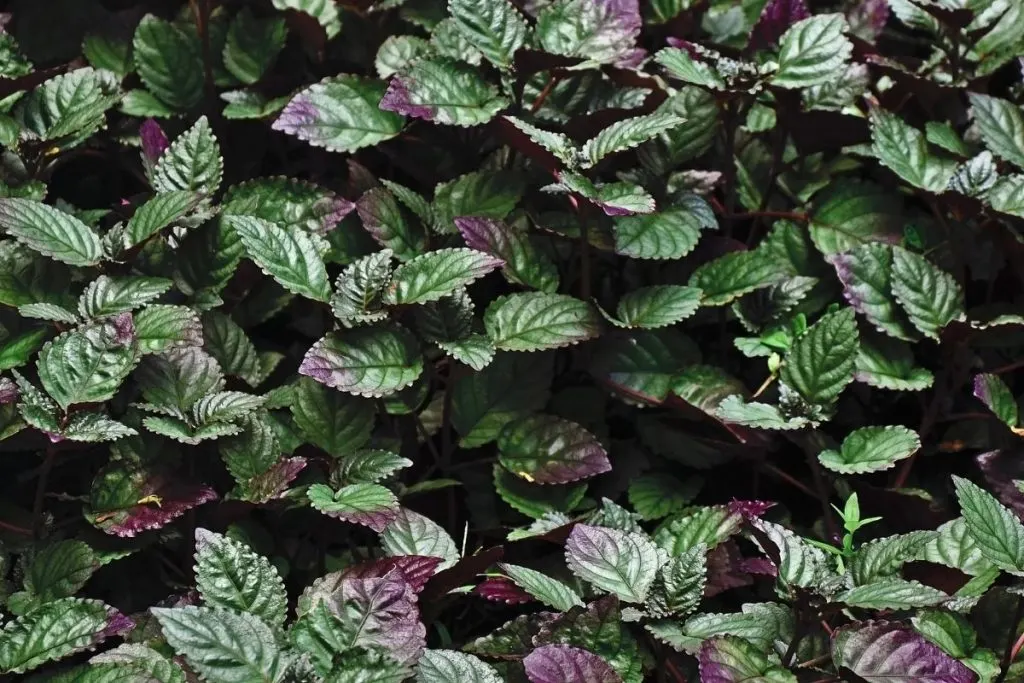
Waffle Plant botanical name: Hemigraphis alternata
Native habitat: jungle areas
Humidity: between 50-70%
Height: up to 7 feet tall
Temperature: between 55°F-75°F
Soil: Rich, humusy soil
Watering: enough to keep the soil moist
Sunlight: Light
– Pointed leaves with a deep purple hue will satisfy your need for a purple house plant. This plant is sensitive to frost and should be taken outside only after the danger of frost; has a slow to the moderate growth rate. Purple waffle plants are excellent examples of a garden pot or hanging basket.
– Direct sunlight can cause burns to the edges of leaves or whitening of color, and the cold metallic sheen of leaves can also fade in direct sunlight. Without enough light, the plant can lose its rich purple color. Purple waffle plants will also thrive under artificial light.
– Commercial planting soil is suitable for purple waffle plants. If you decide to plant them directly in the ground add compost or leaf mold to lighten and enrich the soil.
If the purple waffle plant is moist, it is happy. Moist, well-drained soil is the goal. Plants do not need to be soaked until they drain.
– Increase the humidity around the waffle plants by fogging the plants or growing them in a tray full of pebbles and water. And the steamy bathroom with a window serves as an excellent spa for sick waffle plants that have spent one day too much with a heater.
The purple waffle plant has slow to moderate growth; if your plant is healthy, you will need to replant it when you notice roots coming out of drainage holes. Waffle plant stems break easily, so it is important not to pull the plant out of the stem bowl.
Wandering Jew And Its Charms
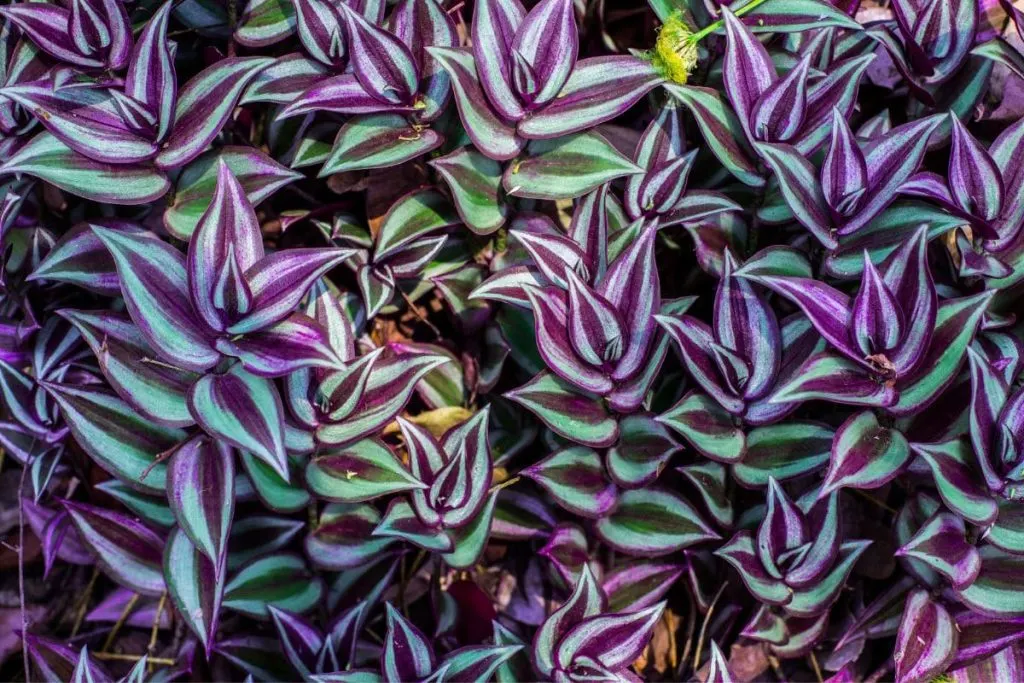
Wandering Jew botanical name: Tradescantia zebrina
Native habitat: Mexico, Central America, and Colombia
Humidity: average
Height: 6 feet
Temperature: 50-80°F
Soil: Perlite or coarse sand. Peat or humus
Watering: Water only when the soil feels dry
Sunlight: bright indirect sun
The name Wandering Jew includes many plant species from the genus Tradescantia. There are over 75 different species of herbaceous perennials in this group of plants; some are destructive weeds and others are houseplants. As the purple queen plant, its velvety foliage won’t leave you indifferent.
– When growing a plant indoors, it is important to give it enough water. However, excessive watering can lead to root rot and plant death.
– Your wandering Jew likes to stay in the potting soil, but you can add a little sand to improve the drainage in your pot. If your plant does not receive enough water, add peat moss, coconut, or vermiculite to the soil to help retain moisture.
– Wandering Jews prefer temperatures between 65 and 75 degrees Fahrenheit, but warmer is fine. The air in houses, especially during the winter, is usually very dry, so it is important to keep the plant moist.
Instead of transplanting the plant, cut a 1-inch piece of stem with at least one leaf. You can root a new plant in a few weeks. Place the stem in room temperature water in a sunny spot, changing the water to keep it clear. Once the roots appear on the stem, plant it in the ground.
Rex Begonia Botinal Beauty
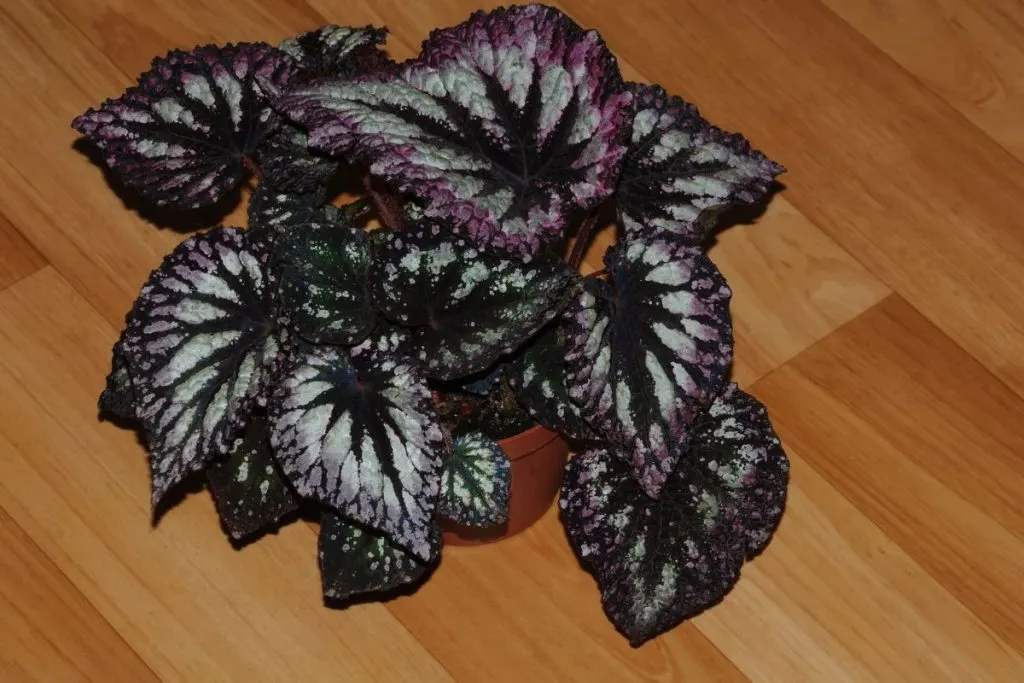
Rex begonia botanical name: Begonia rex begonia botanical
Native habitat: India, southern China, and Vietnam
Humidity: around 50%
Height:12-18 in. tall
Temperature: 60 to 70 degrees Fahrenheit
Soil: porous fast-draining soil using peat moss and perlite
Watering: regular water
Sunlight: Partial sun
Begonia (Begonia rex) is also known as royal begonia and leaf begonia. It is one of the most commonly grown houseplants, and due to its large decorative heart-shaped dark purple leaves, various colors, and textures, it is one of the most beautiful deciduous plants. With its amazing purple foliage, it makes a perfect house plant.
– Royal begonia likes moist air, moderately moist soil, and heat, but direct light should be avoided. It thrives best in partial shade.
The best substrate for growing indoor begonias is white peat, mixed with a little humus, to create a nutritious but drained environment.
We recommend that you feed Begonia often, but with a low concentration of fertilizer, through water for irrigation. Begonia loses its decorative effect over time, so it is recommended to renew it once a year or once every two years.
The best way to propagate this begonia is to lay the leaf cuttings in sand or perlite in a warm, humid environment. A plastic container with a lid or nylon is suitable for that. To stimulate better and better begonia scarring, the use of low-concentration IBA and NAA hormones is recommended.
Coleus Botanical: Growing Guide
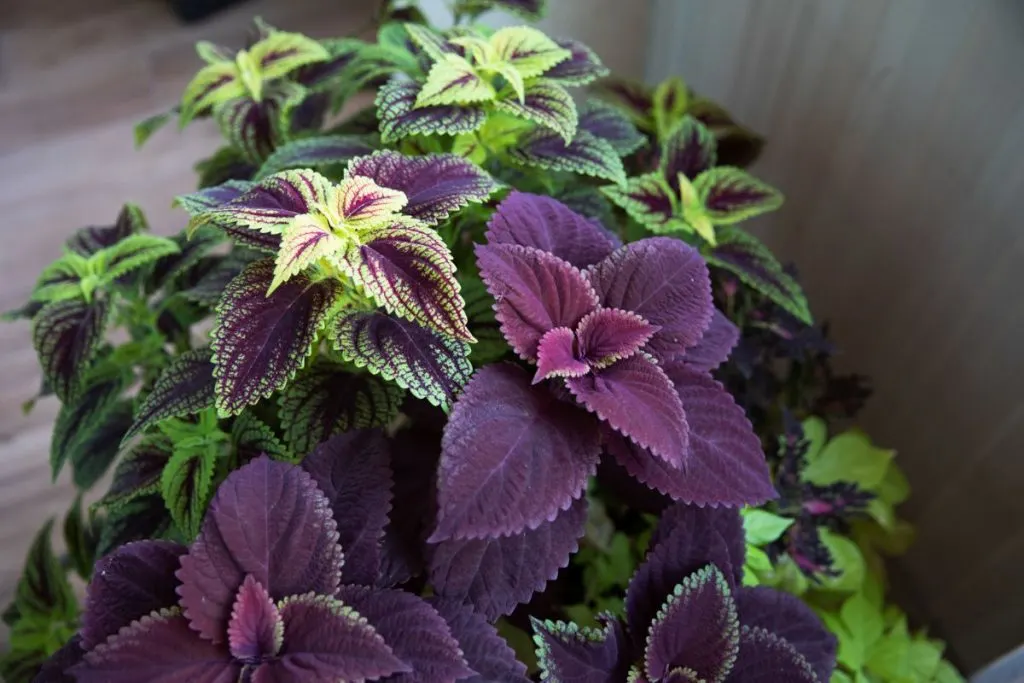
Coleus botanical name: Coleus
Native habitat: China, Taiwan, India, Indochina, Malaysia, Papua New Guinea, Philippines, northern & western Australia, Solomon Islands
Humidity: high humidity
Height: 6 inches to 3.5 feet
Temperature: above 60 degrees Fahrenheit in the summer
Soil: well-draining soil
Watering: when the potting mix is dry
Sunlight: shade and direct sun in the morning
Coleus will be a beautiful houseplant, as long as it receives enough nutrients and light. It is advisable to plant it in a bright place, in the ground for planting flowers that you can buy in any flower shop. In its blooming season, this flowering plant will give you amazing blue-white flowers.
– The soil must be uniformly moist and, of course, not too moist. Place the pot in a place where the plant will receive at least a few hours of full light each day. Nutrients are necessary for every plant, including this one, so it is important to supplement it every month.
– To maintain the good condition of the plant, it is important not to allow it to start producing seeds. When you see flower shoots, be sure to remove them.
– Once the new plant has developed a firm root, you can transplant it into a pot. Young ornamental nettles should be planted carefully to avoid damage to the roots and planted in flower soil. It is important to ensure good drainage so that water does not collect.
Classy Purple Pearl
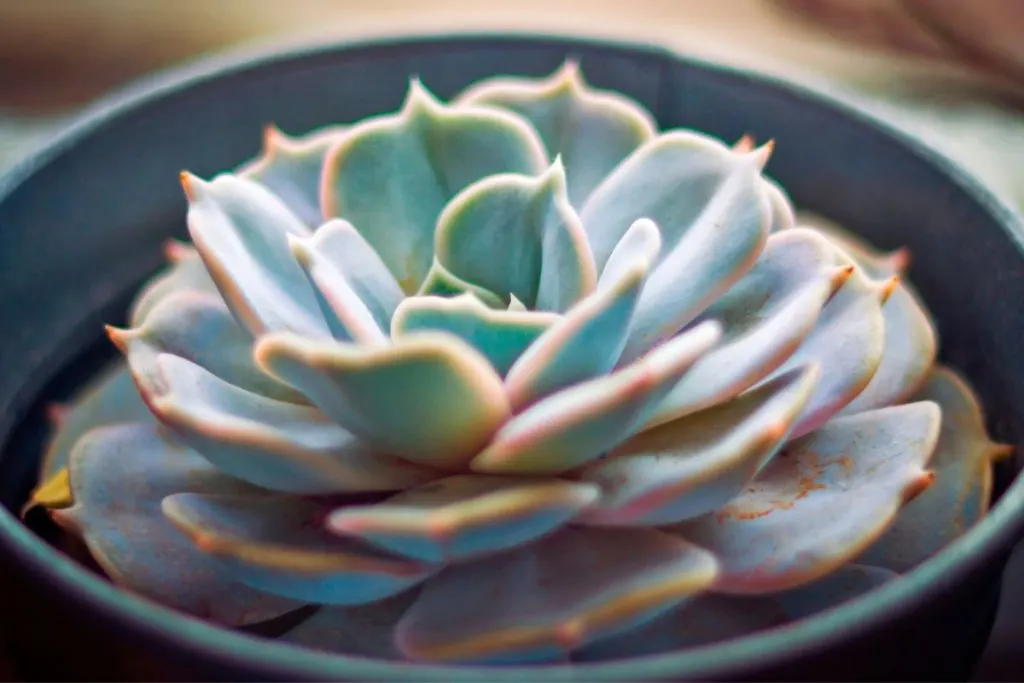
Purple Pearl botanical name: Echeveria
Native habitat: Mexico, the USA, and parts of South America
Humidity: 60-65%
Height: 6 inches tall
Temperature: 45-55 F
Soil: well-draining soil
Watering: 3 times per week
Sunlight: needs sun
The purple pearl variety differs in its double flowers and size, purple color with a beautiful velvety color.
At the same time, 6-8 wreaths are formed and bloom in the bush. The beautiful leaves are perfectly complemented by thick colorful pompoms of flowers. If you follow all the rules of care, the flowering of purple pearl can last quite a long time.
– Violet Pearl likes slightly moist soil, but it should not be poured too hard, otherwise, the roots may rot. Water the flower only with warm water at room temperature. During watering, do not allow water to get on the flower leaves, because then rust stains can appear on them.
– Step-by-step cutting process: Cut a well-developed leaf at a sharp angle. Sprinkle the cut with charcoal or activated charcoal and place it in a glass of water to a depth of no more than 1 inch. When small roots appear, plant the sprout in a separate container with a suitable substrate. Cover the plants with a plastic cup. Babies should appear in about 1.5-2 months. When babies grow to 2 inches in diameter, they are transplanted into a separate pot. For transplanting, you need to take a larger pot a few inches and replace the soil mixture. The transplant should be performed together with an old earthen tubercle, without cutting off the roots.
Rubber Plant: Joyful Plant For Your Home
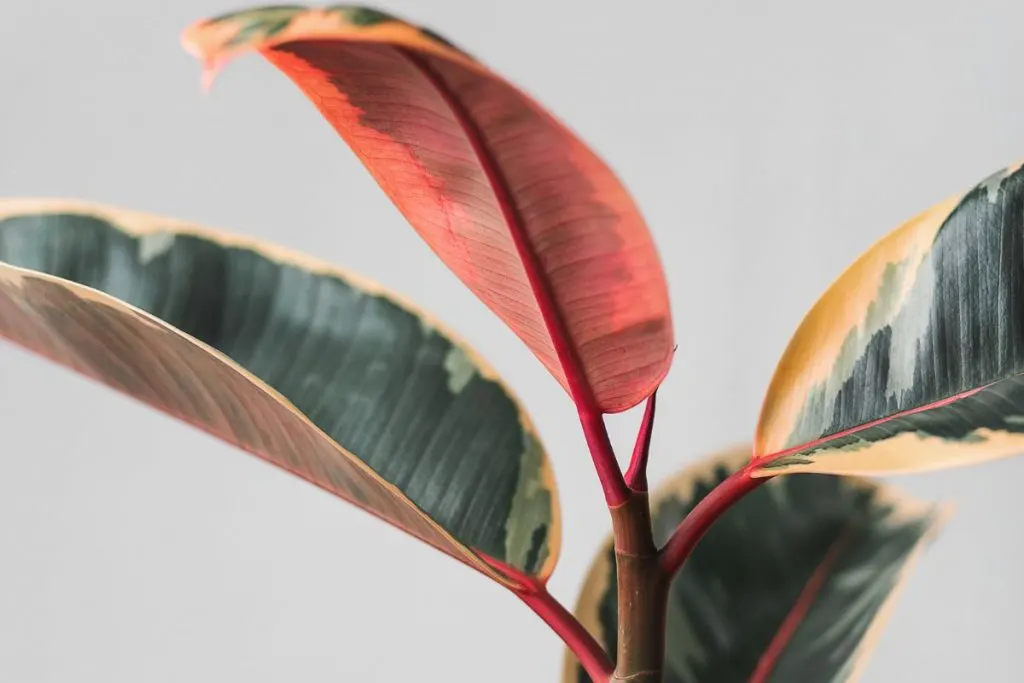
Rubber plant botanical name: ficus elastica
Native habitat: Northeastern India, Myanmar, Peninsular Malaysia, Sumatra, and Java
Humidity: medium humidity
Height: Up to 100 feet tall
Temperature: 65 °F at night and 75 to 80 °F during the day
Soil: peat moss or coconut coir
Watering: medium moist soil
Sunlight: partial shade
– According to experts, ficus gum as a species of houseplant is especially poisonous to cats, dogs, and horses. In addition, if its leaves or twigs are broken, it can cause mild irritation and allergic reactions in children and adults, so they should be highlighted out of reach. But when you observe this plant, its amazing leaves, and purple stems, you would never guess so, would you?
– Although they can survive in low light conditions, a lack of natural light can result in leaf falls (yellow leaves as well) and increased stress for this houseplant, and too much sunlight harms its overall health in the same way.
It should be fertilized regularly with water-soluble fertilizer during its active growth in the warmer months, and this should be done every two weeks unless it grows in low light.
– Although this plant is widespread and can easily be found in the local nursery. Plant lovers may want to just propagate it as one of the most famous ficus plant types. And this can be achieved by using cuttings or layering techniques along with rooting hormones to stimulate root growth.
Pests Of Purple House Plants
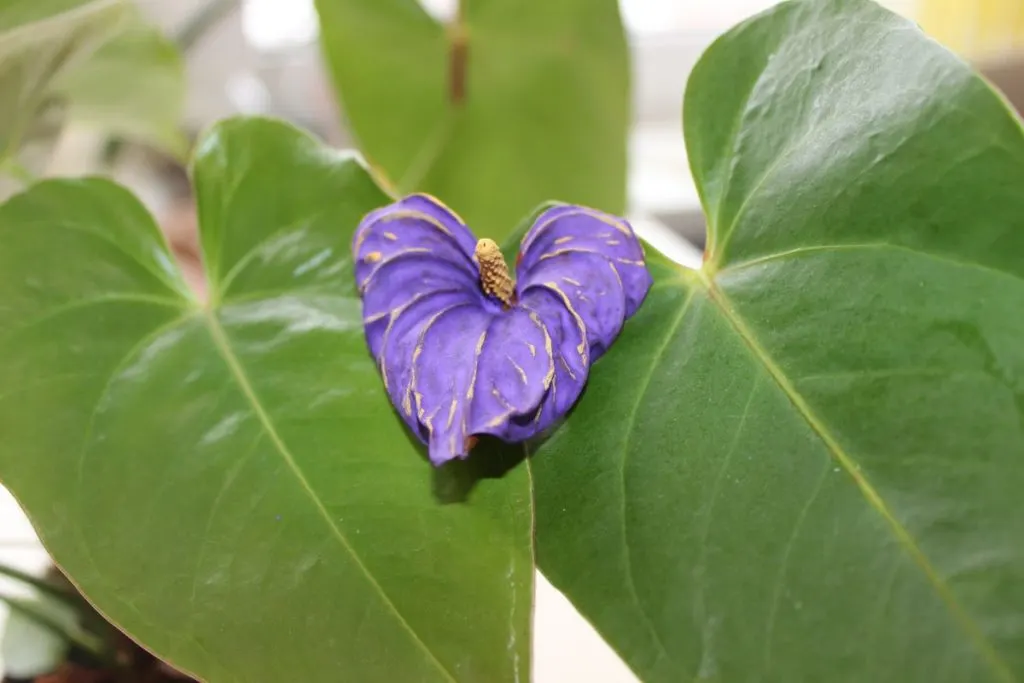
Plants often suffer from whitefly infestations. Pests that leave honeydew and cotton juices can affect the underside of leaves. Serious infestations of whiteflies and insect scales can turn the leaves damaged and colored. Some of the other most common pests are:
- ticks;
- thrips;
- shield;
- louse;
- forest ears;
- nematodes.
Diseases Of Purple House Plants
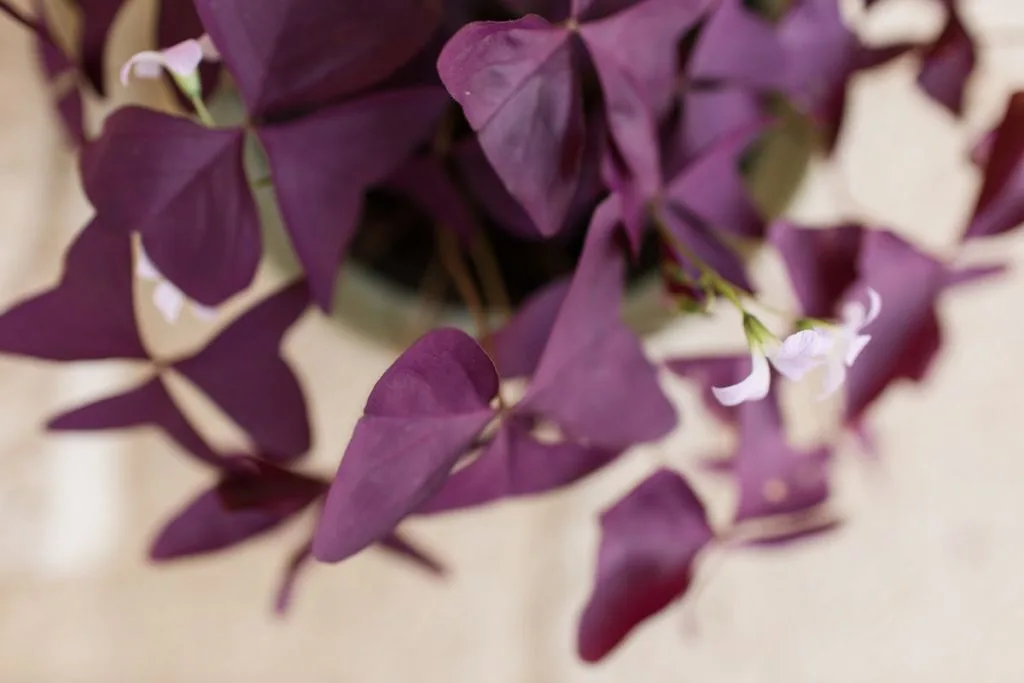
High humidity and excessive watering can cause powdery mildew, botrytis, bacterial spotting of leaves, and rot of stems and roots. In case of violation of agro-technical rules, the following diseases can occur:
- Ashtray: It can be seen by the white bloom on the leaves. It can be cured with foundation or bentelan;
- Late illness: It is manifested by the appearance of brown spots on the leaves. Not treatable;
- Gray rot: It appears as a brown inflorescence on the leaves. It leads to their downfall. Treatment – spray Bordeaux with liquid.
FAQ For Purple House Plants
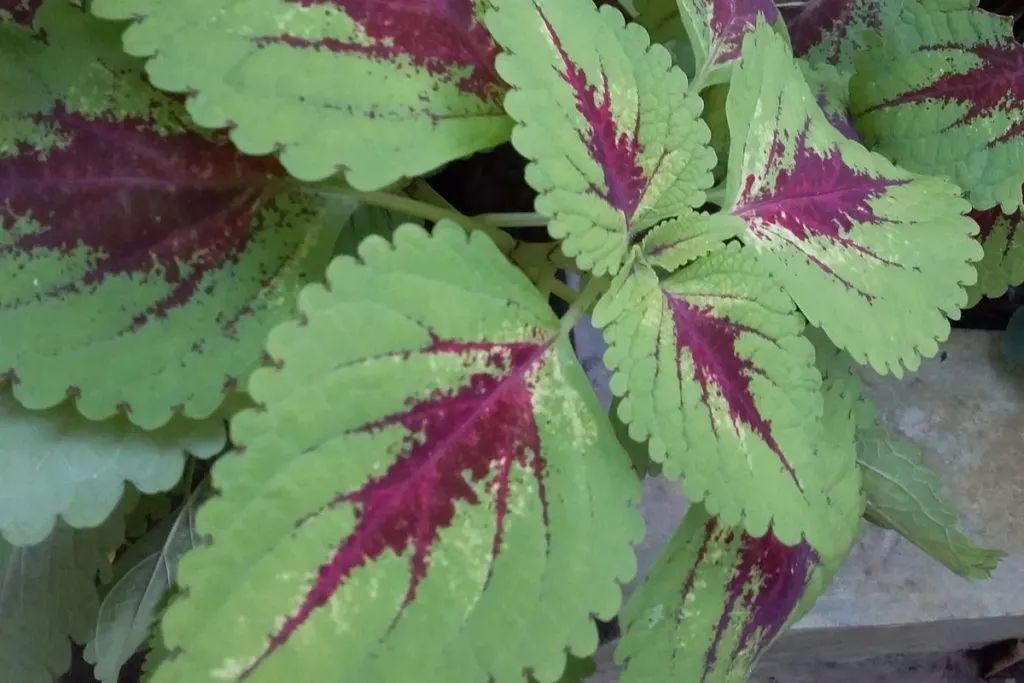
We always have questions, especially when it comes to our new plants. To clear it up for you, we’re going to explain two most often asked questions about purple house plants.
What Are The Unusual Purple House Plants
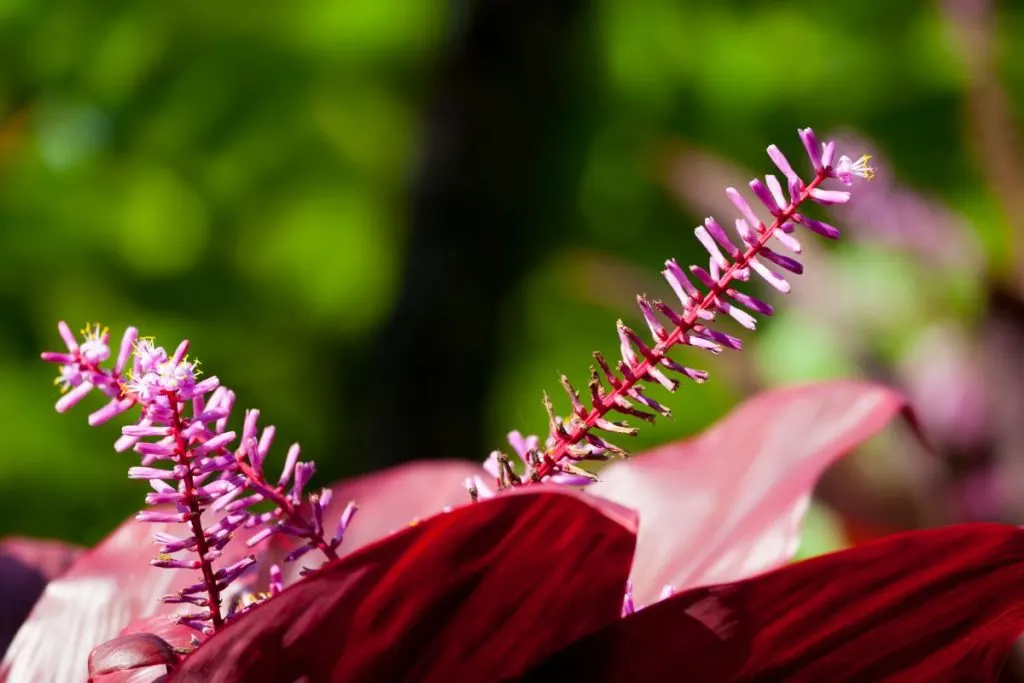
We already talked about many purple houseplants, but there are some others not mentioned yet that could also be a good unusual choice for your home.
Some of them are iron cross begonia botanical, Hawaiian ti plant, rubber plant, Chinese evergreen, African violet, german iron cross, and other ti plant botanical varieties.
These species will give you wonderful yellow flowers and form amazing starry blossoms.
One of the varieties you should look for as well is Purple Queen. In case you’re planting it outdoors, even better, they make an amazing ground cover plant.
Of course, all of these mentioned plants love warm temperatures so pay attention to that. Purple house plants with silver-colored polka dots, silver markings, and purple hues on their leaves will surely make a good house plant.
But just to be sure, don’t expect purple flowers on these plants. Oh no, dear! Purple plants will always have purple leaves only. These flowering plants will give you white, light pink, or yellow flowers when it’s their blooming season.
How To Take Care Of Purple Leaves
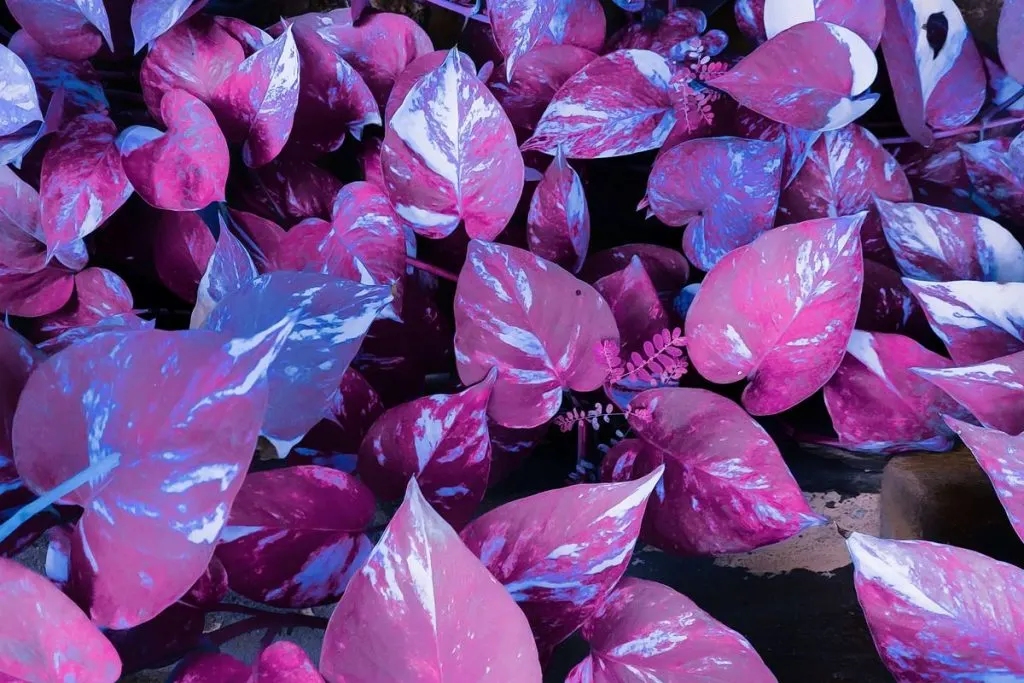
Since these leaves do not contain enough chlorophyll as green leaves, these plants need more light.
Keep your purple plant in a place where it is exposed to the sun for at least a few hours a day so that it can get the desired chlorophyll that it needs to grow. Thus, light is crucial in purple plants.
How Do You Keep Purple Plants Purple
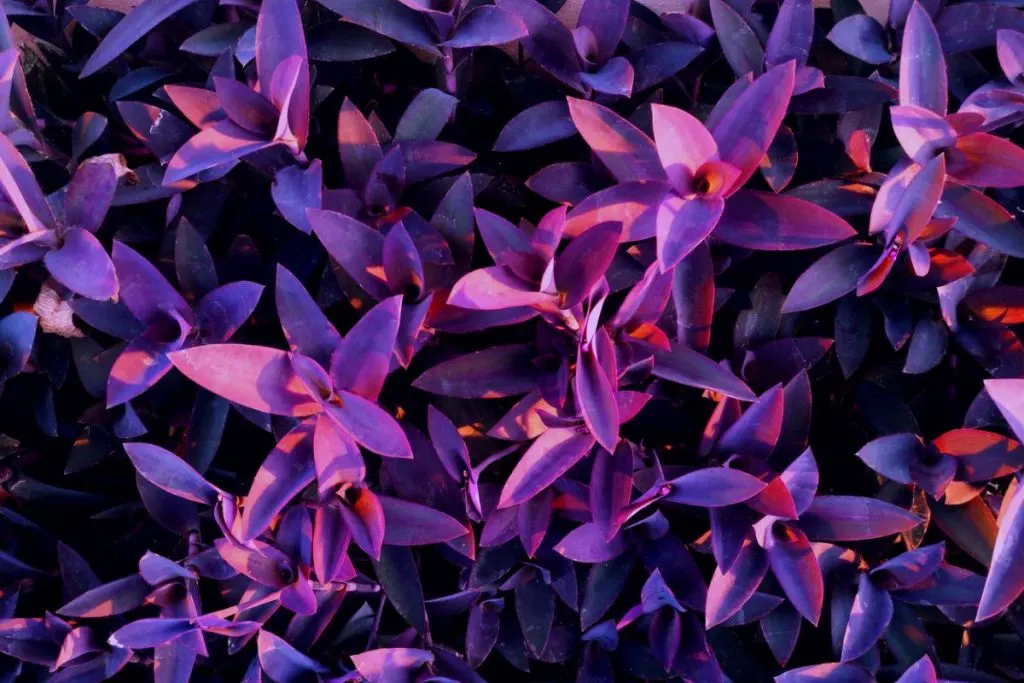
To avoid yellow leaves and other diseases that will change the color of your plant, take good care of it.
Be a responsible owner. When you stick to its care guide your plant will stay healthy and purple.
Pay attention to its soil, watering guide, and everything else in this article that we talked about above. As simple as that!
Purple Magic Has Come To An End
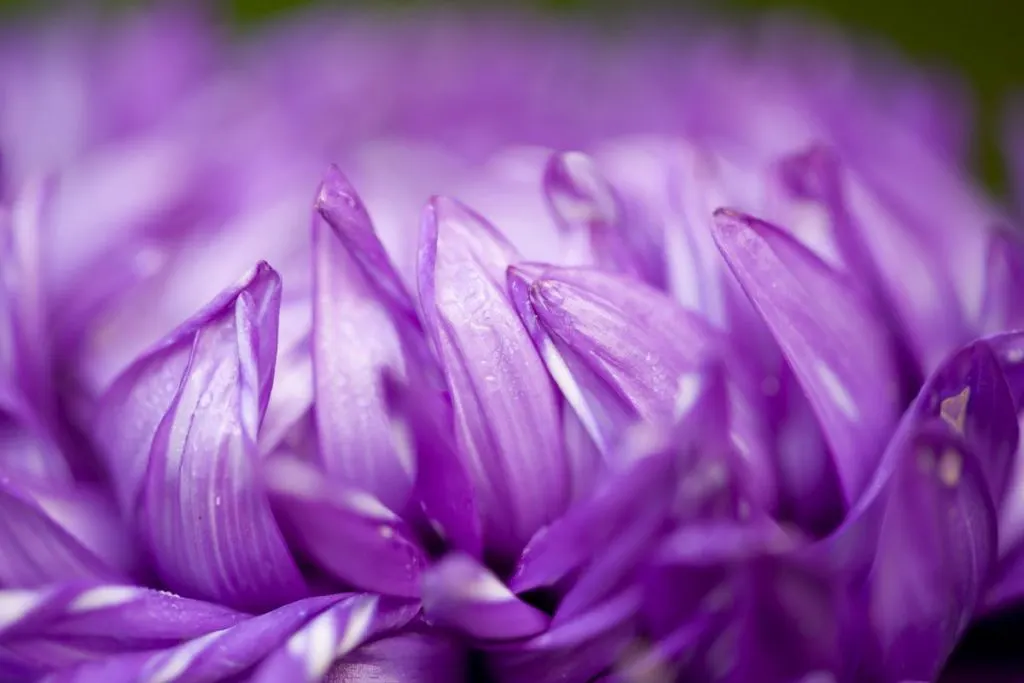
Which one do you choose then? Purple passion Gynura aurantiaca? Ti plants maybe? It doesn’t matter which variation you choose, your home will receive a new look when you add purple house plants to it.
Even the tiniest inch plant will enrich your home! Follow our guide and choose what’s best for you and what suits you the most.
